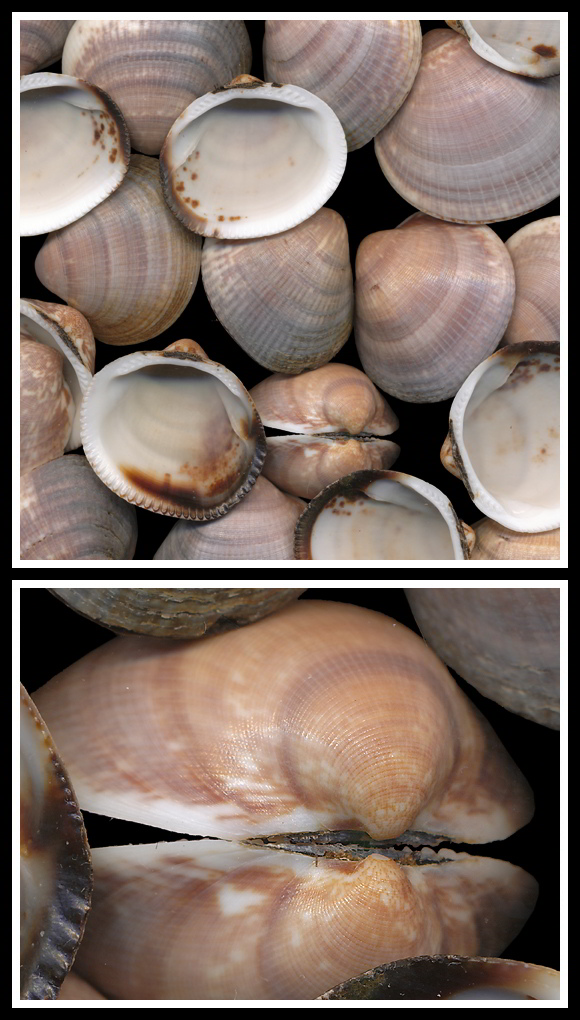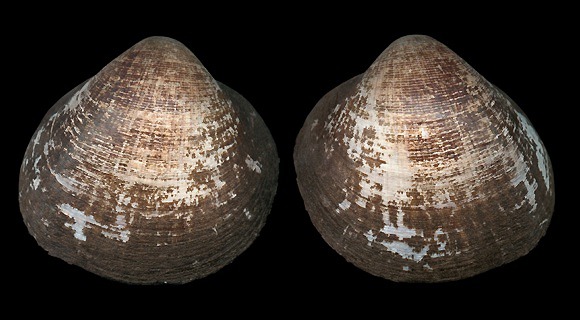
Original taxon: Arca nummaria.
One major spawning peak in spring (Črnčvić & al., 2013).
Trawled at 30-40m deep, Málaga, Andalucia, S. Spain. 85mm.
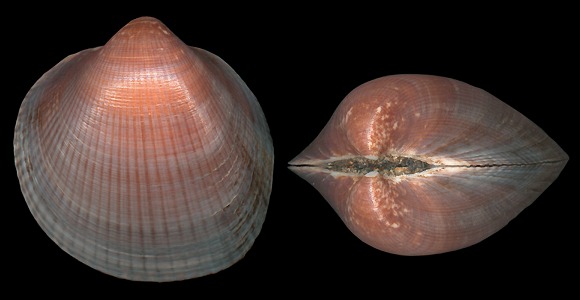
This is Glycymeris violacescens (Lamarck, 1819).
The shell is smaller and more globose than Gl. bimaculata, but remains large. It is inequilateral, and bears a pronounced marginal crenation that borders the margins often up to the level of the lateral teeth and even above. The absence of a typical pattern makes this species easy to distinguish. The only noticeable differences in colouration are some possible pale stains near the umbos, and, in some specimens, sectors of variable saturation in colour, radially disposed. Lastly, the reticulate sculpture is typical as it is disposed in concentric sectors inside which radial and transverse striae are of constant strengh and draw a meshing of constant dimensions. All these parameters (radial striae strength, transversal striae strength, width and heigth of the mesh) can dramatically vary from a sector to another, as in the example above.
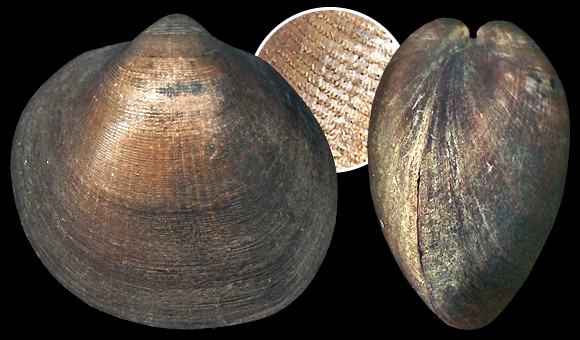
Specimen with full periostracum. 7m deep, on sand, Agiokampos, Larissa, Thessalia, NE. Greece. 77mm.
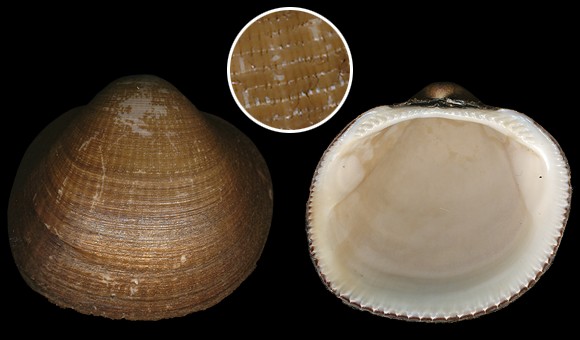
In nets at 25-40m deep, Alger bay, Algeria. 52mm.
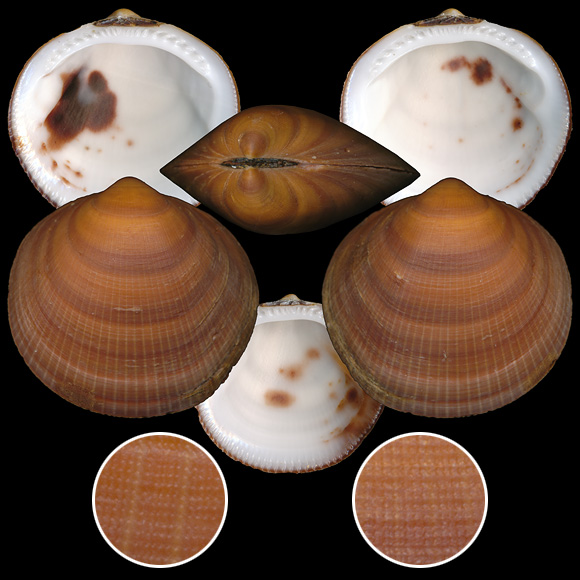
Small specimens of Glycymeris pilosa collected at 12m deep, on sand, Kakkos bay, Ferma, east of Ierapetra, SE. Crete. 28-37mm.
One difference with nummaria, the only other mediterranean species that is almost always unpatterned, is in the symetry of the valves: pilosa is often slightly inequilateral, nummaria is always clearly inequilateral. See below.
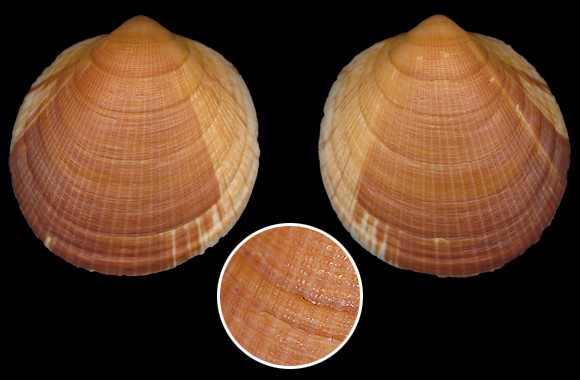
10-20m deep, on gravel, off Matosinhos, Grande Porto. 43mm.
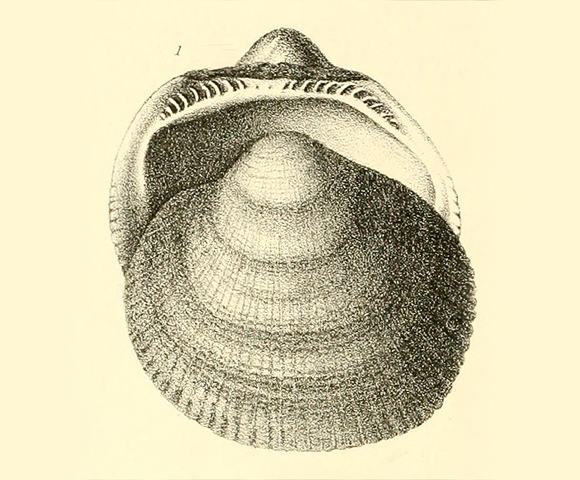
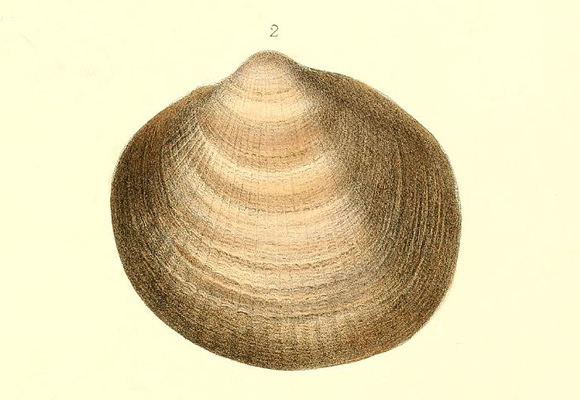
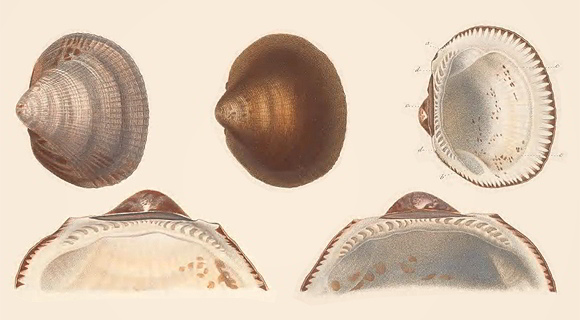
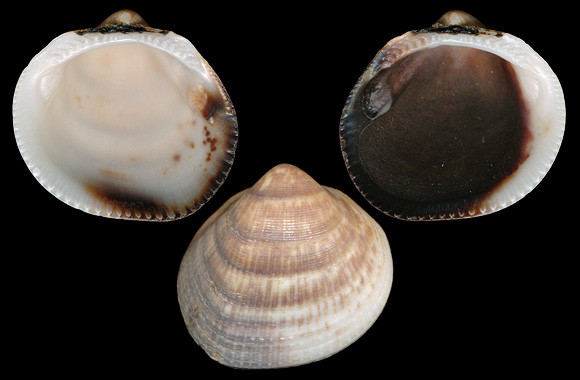
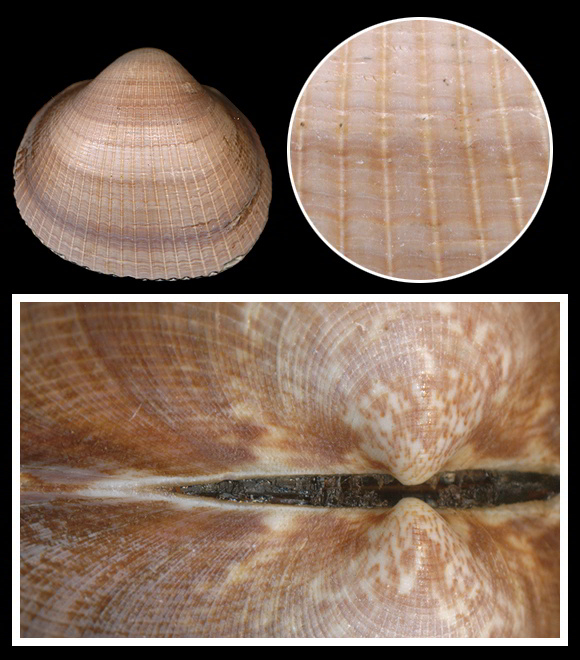
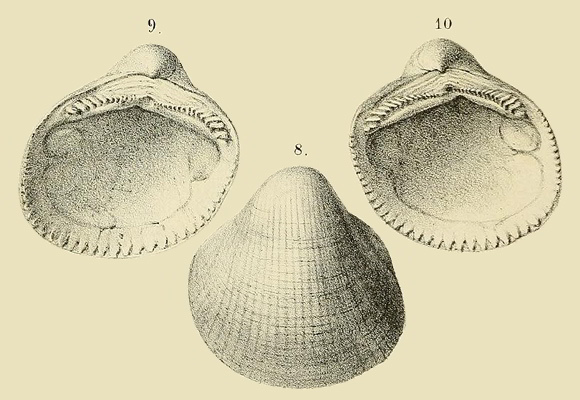
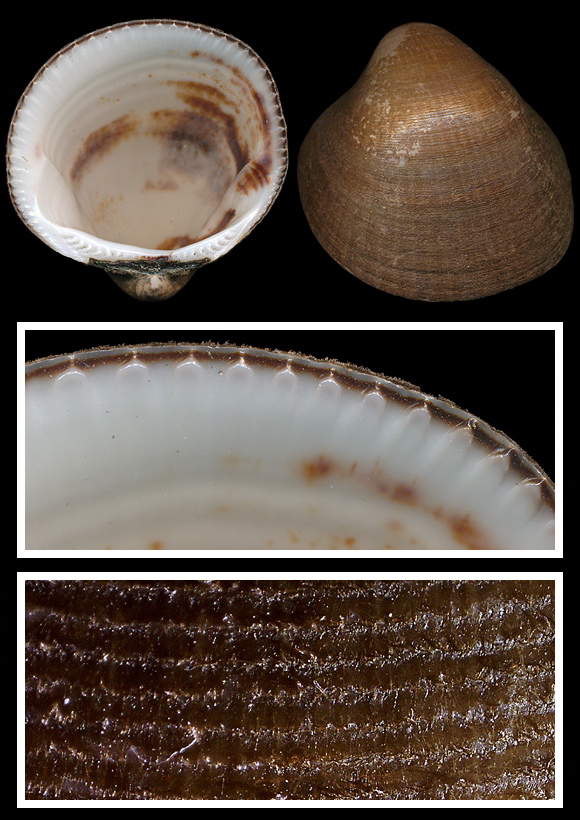
Two major differences with pilosa: the smaller number of the marginal crenations, and the periostracal hairline, arranged more concentrically than orthogonally. – Above: specimen from Chalkída, western Évvia island, Central Greece. 57,6mm.
